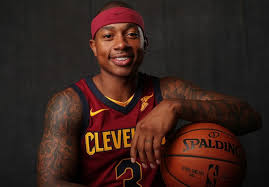
The Cavaliers Need Isaiah Thomas…To Help Their Defense
2017-11-20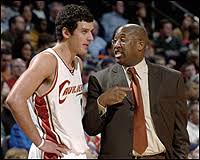
When informed that he needed to improve his defensive effort in order to stay in the rotation, former Cavalier Sasha Pavlovic once told coach Mike Brown that “my defense is my offense“, meaning that what he did as a scorer would more than offset any poor defensive effort. As a coach noted for his emphasis on the defensive end, Brown wasn’t thrilled with the reply, to say the least. While Pavlovic has claimed that he was joking, it was still quite the statement from a player who averaged just 4.9 points per game over ten seasons, and was out of the NBA before his thirtieth birthday.
Joking or not, Pavolic was wildly overrating his offensive capabilities with this statement, which undoubtedly frustrated his coach. It was also frustrating because he was an athletic wing with good size who simply disappeared from games far too often. Still, while Pavlovic’s comment didn’t apply to the man himself, the idea that a player’s offense could help his team’s defense may be true for other players, including current Cavalier point guard, Isaiah Thomas.
At first glance, the idea that Thomas can help in any way on defense seems far-fetched. Obviously, both his offensive abilities and defensive deficiencies are well known. Thomas is a two-time All Star who was voted Second Team All-NBA last season. He finished third in the league in scoring at 28.9 points per game, and was fifth in the voting for NBA MVP, finishing just behind his new teammate, LeBron James. Unfortunately, he’s also 5’9″ at best, and was rated as the worst defensive player in the league by ESPN’s Real-Plus Minus statistic. So, while Thomas’s offense was good enough to make him a net positive player on the floor, his defense did offset a significant amount of his value.
https://www.youtube.com/watch?v=9xzoLbouo4U
Despite his obvious physical challenges—and the undeniable fact the he is a poor defender—there are still several ways that Thomas may be able to help a Cavaliers defense that struggled tremendously prior to their current four-game win streak, and is still ranked as the worst in the league per 100 possessions.
Transition Defense
One of the Cavaliers’ worst defensive traits has been their poor transition defense. This is no surprise when you consider their typically poor defensive effort, as well as the fact that they are the oldest team in the league. However, it’s not as if opposing teams are simply running down court as fast as they can every time they have the ball. Transition opportunities primarily come off of turnovers and missed shots, and those are two areas where Thomas can help.
So far this season, the Cavaliers have started Derrick Rose, Iman Shumpert, and LeBron James at point guard. While the expectations for Rose were relatively low after he signed a one-year contract for the veteran’s minimum, he has still disappointed. Don’t let the 14 points per game and solid shooting percentages from the floor and free throw line fool you, Rose’s negatives far outweigh his positives. His struggles include shooting just 23% from beyond arc on nearly two attempts per game, poor defense, and worst of all, his turnovers. Rose is currently averaging 2.7 turnovers against just 1.7 assists per game, an atrocious number, especially when you consider that most point guards average at least two assists for every turnover. Rose’s turnovers and missed threes allow teams to get out in transition, where the Cavaliers struggle defensively, and his lack of off ball movement and poor outside shooting lets defenders ignore him when he doesn’t have the ball. Combine that with his own poor defense, and it’s little wonder that the Cavaliers have been significantly better when Rose is off the floor.
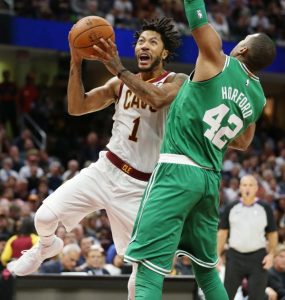
Rose has been so bad that fans have been excited to see him replaced by Iman Shumpert, formerly the object of their derision. Shumpert had been decent coming off the bench to start the year, shooting 44.8% from the field, and 36.4% from three. He played solid defense, and was keeping his attacks off the dribble to a minimum, always a good thing for him. Unfortunately, his play has slipped since replacing Rose in the starting lineup. Since then, Shumpert is shooting just 33% from the field, and 21% from deep. While his turnovers haven’t seemed as rampant, he’s actually averaging 1.4 per game, his most since joining the Cavaliers, while playing a career-low 22 minutes per game. His 1.4 assists per game also equal his career-low from last season. In fairness to Shumpert, he isn’t a true point guard, but like Rose, his propensity for turnovers and poor outside shooting allow opposing teams to get out in transition.
Defenders of Rose and Shumpert would say that their poor play is due to injuries. While that may be true, both players have been injury prone throughout their careers, so that’s part of the deal with them. They can’t be expected to stay healthy after these injuries because they never have before. While Thomas’s detractors will point to his poor individual defense due to his lack of size, Rose isn’t much better, and Shumpert’s one-on-one efforts are often diminished by his poor team defense.
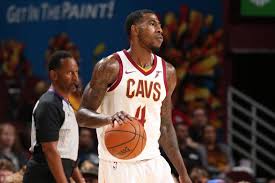
This leaves us with LeBron James. Obviously, James has (yet again) been phenomenal on the offensive end this season. He’s averaging career highs from the field and free throw line, and is at or above his career average in every other statistical category except steals per game. It’s absolutely amazing that this man is in his fifteenth year in the NBA and shows no signs of slowing down. He’s played everywhere from point guard to center, and has carried the Cavaliers as they’ve begun to right the ship with a four-game win streak. Yet even LeBron has his flaws, and they have been exaggerated with the lack of another creator on the perimeter.
The two areas James has struggled with are turnovers and defense. He is currently averaging a career-worst 4.7 turnovers per game. This is up from his previous worst of 4.1 turnovers per game last season. While James has typically paced himself on defense during the past few regular seasons, both problems seem to be exaggerated due to the burden he is carrying on the offensive end. Without another high-level playmaker in the starting lineup, teams are able to key in on James and his passing in ways they haven’t been able to since his first run with the Cavaliers. This is leading to more turnovers and more attempts in transition for the other team (we have a theme here). His burden as a playmaker may also be the reason he is putting less effort in on the defensive end until the closing minutes of games. Obviously, James shouldn’t be guarding the opposing team’s best player all game, every game. That kind of effort would wear him down well before the playoffs. But his unwillingness to rotate and close out on opposing shooters has allowed opponents to get open shots that they simply wouldn’t have if James had just played solid team defense. Both of these things have had a hugely detrimental effect on the Cavaliers’ defense, as shown by the fact that their net rating is actually worse with James on the floor, a statistic that likely won’t last, but is noticeable regardless.
Kaminsky drives inside to give @hornets the lead.
We've got a close one on ESPN! #BuzzCity #AllForOne pic.twitter.com/93x1BrZdf1
— NBA (@NBA) November 16, 2017
So how does Thomas help fix these defensive issues? Well for one, he has to stay healthy. There’s no doubt that Thomas’s hip issues have are serious in terms of how they can impact his basketball career. Still, for argument’s sake, let’s assume he does come back healthy. Thomas hasn’t missed major time at any point in his career prior to this season, so it’s not exactly fair to call him injury-prone. If he can come back and even put up numbers around his career averages (which is what we’ll measure him by for this piece) if not his MVP-type numbers from last season, that would be a huge improvement over what the Cavaliers have gotten from the point guard spot this season.
Let’s start by looking at the passing. While Thomas’s career average of 2.3 turnovers per game doesn’t seem that much worse than Rose’s 2.8 mark, that’s one fewer turnover every two games. Some will point out that Thomas actually averaged more turnovers per game last season than Rose has this season, but Thomas also averaged 5.9 assists per game last season. Thomas has also had a better assist-to-turnover ratio than Rose in every season since Rose tore his ACL in the 2012 playoffs. While Shumpert has averaged fewer turnovers than the other two men due to having the ball in his hands less, he also averages fewer assists. Thomas is the only one of the three players with an assist-to-turnover ratio of over 2:1, with his own mark being 2.26:1. He’ll have far more passes that lead to points for his team than those that lead to scoring for the opposition.
There’s also the matter of putting the ball in the basket. Thomas is a good outside shooter with a career mark of 36.7% from deep. His 49% career mark on two-point attempts is also better than that of either Rose or Shumpert. He also has a career True Shooting Percentage of 58.5%, which is 6.4% higher than Rose, and a whopping 8.6% higher than Shumpert. Thomas also gets to the line considerably more often than either player, averaging 5.5 free throw attempts per game for his career, and shooting 87.6% from the line. It’s hard for teams to get out and run when their opponents are scoring, and Isaiah Thomas is very good at that. Teams won’t be able to get out and run off of his offense the way they have with Rose and Shumpert handling the ball.
Thomas’s return will also relieve James of a good amount of the playmaking burden he has dealt with. While James will still have the ball in his hands more than any other player, Thomas will be given plenty of opportunities to create as well. It’s much harder for opposing defenses to key in on two playmakers instead of one, and there’s a good chance that James’s turnovers will decrease significantly as he and Thomas learn to play together. Having a lighter burden on offense could also prompt James to give a bit more effort on the defensive end, where he is still great when motivated.
Lineups
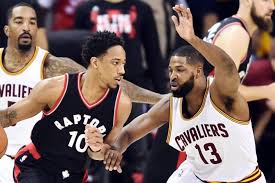
The other defensive advantage of Thomas’s return could come in the form of the starting lineup. While Lue had reinserted Tristan Thompson as the starting center before he went down with a strained left calf, the lack of shooting from the point guard position caused the offense to struggle. Whenever Thompson shares the floor with Rose, Shumpert, or Dwyane Wade, it means that there at least two poor/non outside shooters on the floor, limiting the spacing for the offense as defenses don’t have to guard those players away from the basket. With Thomas back, the Cavaliers would once again have shooting at all of the guard and forward positions, making it much easier to start a non-shooter like Thompson at center. While Thompson was off to a rough start to the season (To be fair, there were rumors of a leg injury before the strained calf.), the same could be said for most of his teammates. Thompson is still a high-level rebounder who guards the pick-and-roll extremely well while switching onto smaller guards. He also provides the Cavaliers’ only real rim protection. Thompson will never be a star, but he is a terrific glue player who fills in a lot of holes for the Cavaliers. The additions of Thompson and Thomas to the starting lineup should give it a balance of passing, shooting, defense, and rebounding that it has been lacking.
Isaiah Thomas is running full court and shooting at both ends
— Joe Vardon (@joevardon) November 19, 2017
With today’s news, it seems as if Thomas may return well before the original target of January. For those who have followed his career, that should come as no surprise. This is a man who has gone from being the last pick in the 2011 NBA Draft to becoming one of the stars of this league. He’s beaten tremendous obstacles so many times that it would be foolish to bet against him doing so again. Whenever Isaiah Thomas does return to action, don’t be surprised to see the Cavaliers drastically improve on both ends of the floor.

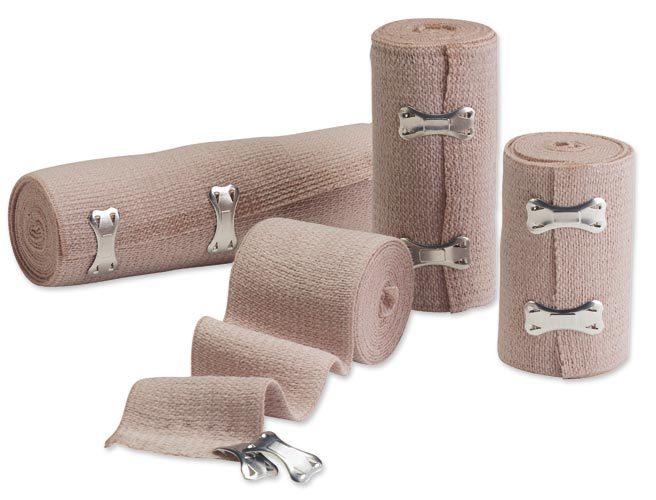
Nomad, I have to remind you that pregame you had a 30/20 double double for Drummond and Jackson going for 35 tonight. Glad you were wrong !
Sending Zizic down before Detroit game leaves us with 11 players available, two short of the 13 max.
Calderon, JR, Crowder, Bron, Love; Wade, Korver, Green, Frye, Cedi, Holland.
I mean, if Love or Frye have foul issues or tweak something we will get slaughtered.
mike p —-yeah understand my posts lately have been ” venomous “—but we are almost 20 games into the season ( know we have new players / injuries ) but this team still hasn’t put 1 complete solid game together —-and yes CLUELESS’S coaching ( or lack of ) is frustrating —–am trying to be positive –but they ( the cavs ) have got to give us some reason / hope to be positive —-GO CAVS —” BELIEVE IN THE LAND “
their best games have been against the Bucks….also thought Wizards game was good too with Lebron show….team isn’t going to try until everyone is back healthy and its 2018 feb/mar time period…its what it is currently….sure frustrating but no one will remember when team is contending for Finals again in May
Yea it’s been a little frustrating but c’mon we’ve been to three straight Finals including one title and we’re going to be right there again this year. I really find it hard to be negative and to complain because we’ve been spoiled rotten these past few years.
I don’t think his name is actually CLUELESS.
leo not trying to be like JRL mentioned earlier a “Debbie downer ” but you have to admit and be honest about some of CLUELESS’S flaws—–1 of the top one– not trusting / developing young athletic talent-players– if given some regular playing minutes could benefit us —-just eating minutes up ( save the veterans—–we do have a “couple ” of older players on this team ) and also let them play now to see if they are playable come playoff time—letting them rot on the bench does nothing for the players / the entire team—you look at other teams –let’s… Read more »
I’m sure Drummond will get going but i haven’t seen him dominate the Cavs consistently and I’m sure Cavs will get him in foul trouble and force Pistons hand…sure Lue seems to be ‘chill’ through everything so far, but no random bench player is going to lift the Cavs right now, they know who they are and they have won a couple here, i think they will win tonight and start jelling.
weird negativity on this blog lately….team has rash of injuries at pg and not many options, so yes Calderon may have to start and just try his damnedest to not blow the game…not sure what the hype is on zicic, no one here has ever heard of him prior to the Kyrie trade so why the big fuss. Possible Cavs rotate Love and Frye on Drummond and possibly stick JR on Reggie or double team him so another Piston will have to do something….Drummond doesn’t strike me as ‘killler instinct’ type so he may get some buckets but doubt he… Read more »
Drummond is averaging almost 16 rebounds per game and the Cavs have been very weak in that area, partially because anytime Love sits, we don’t have anyone capable of banging with big men down low, Channing included. This is something Zizic could help. He likely won’t necessarily kill us on the offensive end but having Zizic in their to soak up minutes/fouls would be very helpful. Stopping Reggie Jackson won’t be our only concern either. Tobias Harris has been playing incredibly well and is averaging over 19 a game. Not to mention the Pistons are averaging like 38% from three,… Read more »
I’ll be the first one to put a hand up and confess to being a Debbie downer lately.
It’s just extremely frustrating to have young, talented players(my opinion) sit on the bench while we are getting killed by sub-500 teams, a lot of it based on athleticism, based on age. So to see both Cedi and Zz, riding the bench while we could definitely use them, it’s irritating.
i doubt Zicic does anything better than Frye or Love and Cavs know that too and thus sent him down to get more playing time and polish….the dude is super raw and yes a big body can help but Cavs will fight that battle with the bigs over next few games. Im not concerned about it and Lebron will not have a young unproven big take minutes from veterans while he is on the team, just won’t happen, and Lue will honor that.
clueless’s response to why he is starting jose—–” do you see any other pt gd’s around “—-that just EXUDES a ton of confidence for tonight——Drummond —-30 /20 —–Jackson —35 pts tonight —-LeBron 40 + minutes might still be able to keep it close / get a possible win
No way… He didn’t say that.
agree tonight vs Drummond would be a good time for some minutes / exposure for “zz”—-but hey what do we know —that just makes too much sense I guess —-it is frustrating / disappointing to continue to watch CLUELESS —treat his young players / not develop them / give them confidence
I can’t comprehend how a first round pick (23rd) doesn’t get backup minutes in a team WITHOUT a true center.
Yeah, you can say the league has changed to small ball blah blah but a solid center is still a needed piece.
Thanks Lue for your stupidity.
Anthony Bennett, a #1 pick, would not bet backup minutes on any NBA team.
so much for ‘ZZ” getting any minutes with the cavs—was assigned to Gleague / canton—–at least he will be getting some playing time ——Drummond is going to have a huge game tonight along with Jackson —–could be ugly
Amazing waste of usable talent.
Thanks cLuelss.
Especially because, ya know, our starting center is injured?
He needs more seasoning….he’ll get some PT when he’s 33… (and I’m not even convinced Zizic is playable right now….but they could throw him in for a few minutes a game against some lineups)
Like against Drummond tonight…
He did plenty good against Gortat for the 6 minutes he was in. Not as good on the PnR defense but guess what, you LEARN while on the job. Man Lue is a horrible coach…
Sidenote: not yelling at you MikeO, just angry at the coaching staff.
Nomad, you’ve been REALLY (former nomad caps for emphasis) down lately. I think Drummond will get his 15+boards, but I see the Cavs winning tonight. And I haven’t been the most optimistic this year either.
enjoyed the read —–hoping IT comes back at least offensively to the last 2 seasons all star form—-as it is right now—with crowders lack luster play / clueless refusal to play “zz “/ IT –unknown comeback from injury / and the nets playing —probably finishing higher than what was projected ——-YES KOLBY GOT ” TAKEN TO THE WOOD SHED “—-by ainge ——thought at the time we had the advantage / won that trade —-but have changed my tune since —-
Good read, Mike. I do not expect IT from last year, but if he can stay on the court, he’ll be streets ahead of the flotsam they’ve been throwing out there so far this year…
Great article.
Thomas can’t come soon enough. We need a second threat besides LeBron. If healthy, he’ll make everyone’s job easier.
Absolutely. Though I do feel for him. Usually to have great form, a full pre-season is needed. To start mid-season against guys that have been playing all year & also be expected to perform at a decent percentage of your previous level is a lot to ask. Dude clearly has character though, which will help.
The only thing we can hope is that come playoff time he will be in shape and fresher than most others.
From far, I think Kevin Love is doing great as of lately atleast on offense as 2nd threat besides Lebron.
Love has been, as usual, very underrated. The problem is that he needs players to feed him the ball in order to be successful. The Cavs have a nasty habit of forgetting he’s on the court even after he puts in 20+ points in one quarter… Having someone like Thomas who will be sharing ball handling duties will give the team someone else who can create their own shot regardless of being fed the ball by anyone else. Not to mention that IT is a good passer and could create a similar two-man game with Love as he did with… Read more »
JMay, I watched quite a bit of Isaiah, one thing I can tell you is that he will help Lebron and team, but as Cousins put it in sacramento, he holds the ball too long. So, Lebron may be better option to distribute offense. Lue may never try this, but when IT comes back, he can bring up the ball and look for early offense and run play through Lebron, kind of how dubs run offense with Curry and Draymond.
I’m not saying that he is going to ever surpass LeBron in terms of time spent with the ball, but having another offensive distributor on this team will only help. Not to mention, we have no idea what the Cavs version of IT will look like compared to the Boston one where IT was pretty much their only offensive threat.
+1